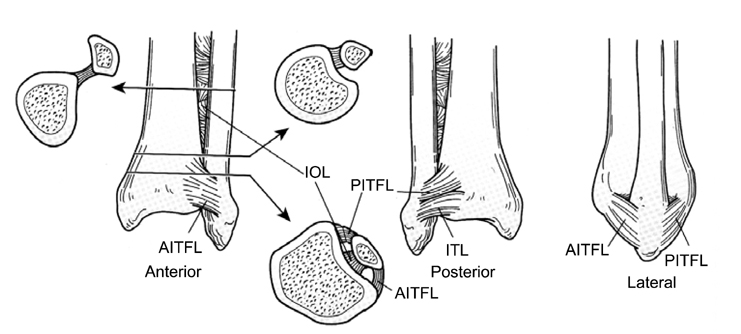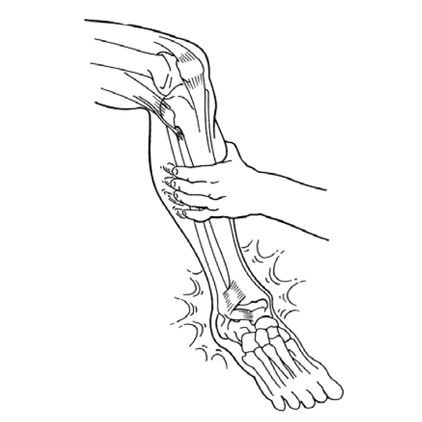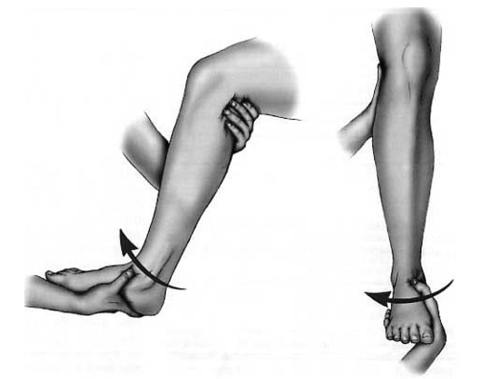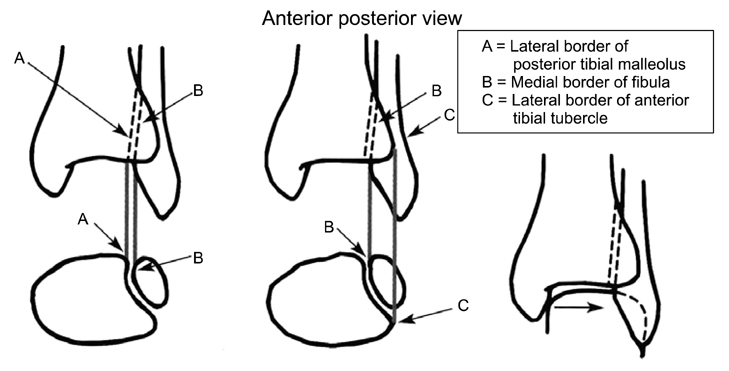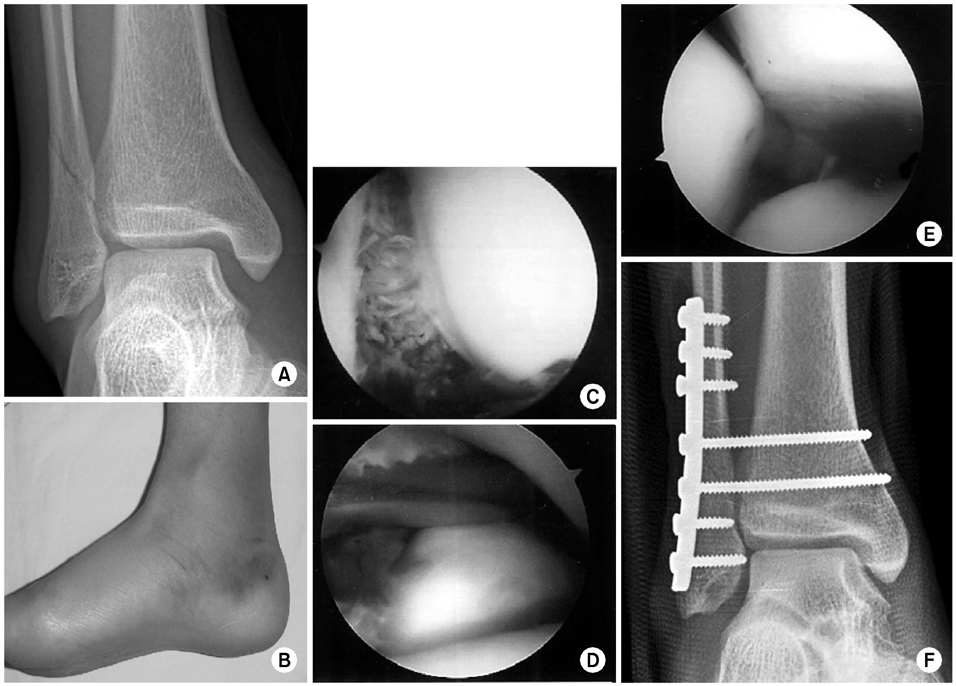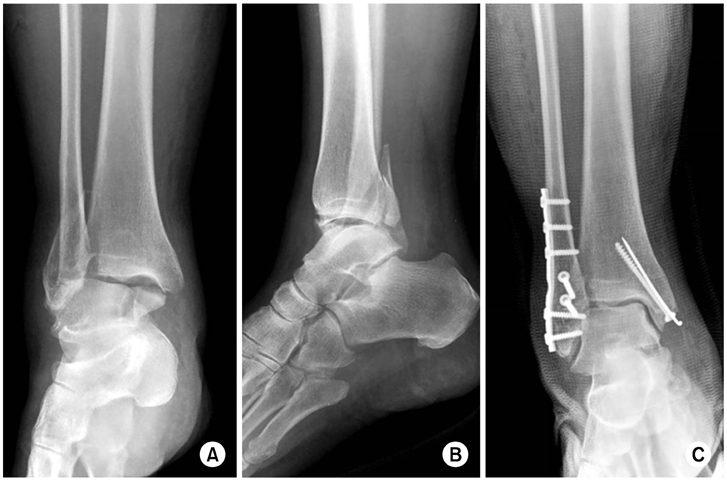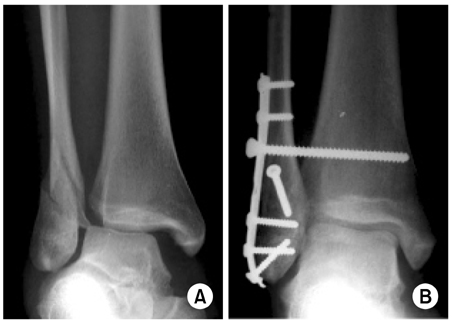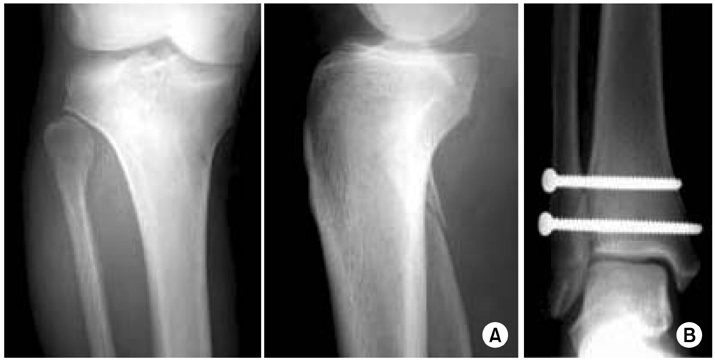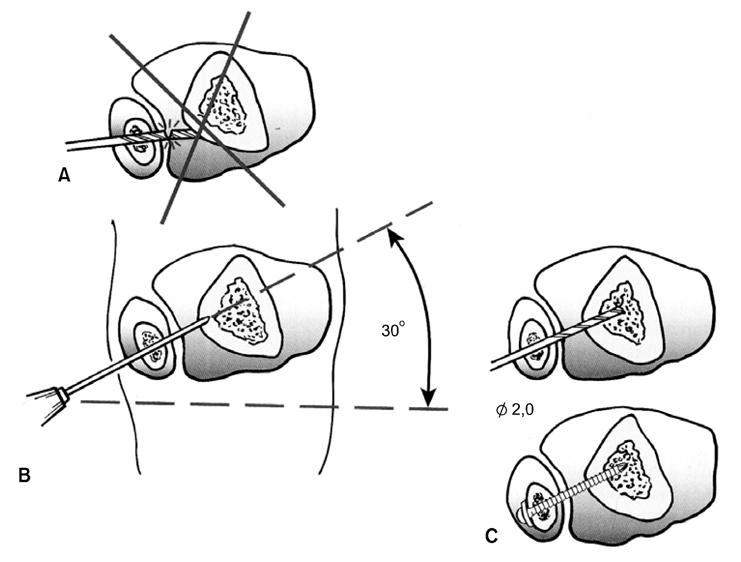J Korean Fract Soc.
2007 Jul;20(3):282-290. 10.12671/jkfs.2007.20.3.282.
Ankle Syndesmotic Injury
- Affiliations
-
- 1Department of Orthopedic Surgery, Chonnam National University Hospital, Gwangju, Korea. kbleeos@chonnam.ac.kr
- KMID: 2296831
- DOI: http://doi.org/10.12671/jkfs.2007.20.3.282
Abstract
- No abstract available.
MeSH Terms
Figure
Cited by 1 articles
-
Isolated Syndesmotic Injury
Yong Tae Kim, Hyong Nyun Kim, Yong Wook Park
J Korean Foot Ankle Soc. 2016;20(3):100-105. doi: 10.14193/jkfas.2016.20.3.100.
Reference
-
1. Alldredge RH. Diastasis of the distal tibiofibular joint and associated lesions. JAMA. 1940; 115:2136.
Article2. Beumer A, van Hemert WL, Niesing R, et al. Radiographic measurement of the distal tibiofibular syndesmosis has limited use. Clin Orthop Relat Res. 2004; 423:227–234.
Article3. Blasier RD, Bucholz R, Cole W, Johnson LL, Mäkelä EA. Bioresorbable implants: applications in orthopaedic surgery. Instr Course Lect. 1997; 46:531–546.4. Boden SD, Labropoulos PA, McCowin P, Lestini WF, Hurwitz SR. Mechanical considerations for the syndesmosis screw. A cadaver study. J Bone Joint Surg Am. 1989; 71:1548–1555.
Article5. Burwell HN, Charnley AD. The treatment of displaced fractures at the ankle by rigid internal fixation and early joint movement. J Bone Joint Surg Br. 1965; 47:634–660.
Article6. Clanton TO, Paul P. Syndesmosis injuries in athletes. Foot Ankle Clin. 2002; 7:529–549.
Article7. Close JR. Some applications of the functional anatomy of the ankle joint. J Bone Joint Surg Am. 1956; 38:761–781.
Article8. Cotton F. The ankle and foot. Dislocations and jointfractures. Philadelphia, PA: WB Saunders;1910. p. 535–588.9. Cox S, Mukherjee DP, Ogden AL, et al. Distal tibiofibular syndesmosis fixation: a cadaveric, simulated fracture stabilization study comparing bioabsorbable and metallic single screw fixation. J Foot Ankle Surg. 2005; 44:144–151.
Article10. Ebraheim NA, Lu J, Yang H, Mekhail AO, Yeasting RA. Radiographic and CT evaluation of tibiofibular syndesmotic diastasis: a cadaver study. Foot Ankle Int. 1997; 18:693–698.
Article11. Edwards GS, DeLee JC. Ankle diastasis without fracture. Foot Ankle. 1984; 4:305–312.
Article12. Hoiness P, Stromsoe K. Tricortical versus quadricortical syndesmosis fixation in ankle fractures: a prospective, randomized study comparing two methods of syndesmosis fixation. J Orthop Trauma. 2004; 18:331–337.13. Hopkinson WJ, St Pierre P, Ryan JB, Wheeler JH. Syndesmosis sprains of the ankle. Foot Ankle. 1990; 10:325–330.
Article14. Jenkinson RJ, Sanders DW, Macleod MD, Domonkos A, Lydestadt J. Intraoperative diagnosis of syndesmosis injuries in external rotation ankle fractures. J Orthop Trauma. 2005; 19:604–609.
Article15. Kaukonen JP, Lamberg T, Korkala O, Pajarinen J. Fixation of syndesmotic ruptures in 38 patients with a malleolar fracture: a randomized study comparing a metallic and a bioabsorbable screw. J Orthop Trauma. 2005; 19:392–395.
Article16. Kukreti S, Faraj A, Miles JN. Does position of syndesmotic screw affect functional and radiological outcome in ankle fractures? Injury. 2005; 36:1121–1124.
Article17. Lauge-Hansen N. Fractures of the ankle. III. Genetic roentgenologic diagnosis of fractures of the ankle. Am J Roentgenol Radium Ther Nucl Med. 1954; 71:456–471.18. Leeds HC, Ehrlich MG. Instability of the distal tibiofibular syndesmosis after bimalleolar and trimalleolar ankle fractures. J Bone Joint Surg Am. 1984; 66:490–503.
Article19. Lund-Kristensen J, Greiff J, Riegels-Nielsen P. Malleolar fractures treated with rigid internal fixation and immediate mobilization. Injury. 1981; 13:191–195.
Article20. Marsh JL, Saltzman DL. Ankle fractures. In : Bucholz RW, Heckman JD, editors. Rockwood and Green's fractures in adults. 6th ed. Philadelphia, PA: Linppincott Williams and Wilkins;2006. p. 2147–2247.21. Marti RK, Raaymakers EL, Nolte PA. Malunited ankle fractures. The late results of reconstruction. J Bone Joint Surg Br. 1990; 72:709–713.
Article22. McBryde A, Chiasson B, Wilhelm A, Donovan F, Ray T, Bacilla P. Syndesmotic screw placement: a biomechanical analysis. Foot Ankle Int. 1997; 18:262–266.
Article23. McConnell T, Creevy W, Tornetta P. Stress examination of supination external rotation-type fibular fractures. J Bone Joint Surg Am. 2004; 86:2171–2178.
Article24. Michelson JD, Magid D, Ney DR, Fishman EK. Examination of the pathologic anatomy of ankle fractures. J Trauma. 1992; 32:65–70.
Article25. Needleman RL, Skrade DA, Stiehl JB. Effect of the syndesmotic screw on ankle motion. Foot Ankle. 1989; 10:17–24.
Article26. Nielson JH, Sallis JG, Potter HG, Helfet DL, Lorich DG. Correlation of interosseous membrane tears to the level of the fibular fracture. J Orthop Trauma. 2004; 18:68–74.
Article27. Oae K, Takao M, Naito K, et al. Injury of the tibiofibular syndesmosis: value of MR imaging for diagnosis. Radiology. 2003; 227:155–161.
Article28. Ogilvie-Harris DJ, Reed SC, Hedman TP. Disruption of the ankle syndesmosis: biomechanical study of the ligamentous restraints. Arthroscopy. 1994; 10:558–560.
Article29. Pettrone FA, Gail M, Pee D, Fitzpatrick T, Van Herpe LB. Quantitative criteria for prediction of the results after displaced fracture of the ankle. J Bone Joint Surg Am. 1983; 65:667–677.
Article30. Pneumaticos SG, Noble PC, Chatziioannou SN, Trevino SG. The effects of rotation on radiographic evaluation of the tibiofibular syndesmosis. Foot Ankle Int. 2002; 23:107–111.
Article31. Rasmussen O, Tovborg-Jensen I, Boe S. Distal tibiofibular ligaments. Analysis of function. Acta Orthop Scand. 1982; 53:681–686.32. Snedden MH, Shea JP. Diastasis with low distal fibula fractures: an anatomic rationale. Clin Orthop Relat Res. 2001; 382:197–205.33. Takao M, Ochi M, Naito K, et al. Arthroscopic diagnosis of tibiofibular syndesmosis disruption. Arthroscopy. 2001; 17:836–843.
Article34. Tornetta P, Spoo JE, Reynolds FA, Lee C. Overtightening of the ankle syndesmosis: is it really possible? J Bone Joint Surg Am. 2001; 83:489–492.
Article35. Wrazidlo W, Karl EL, Koch K. Arthrographic diagnosis of rupture of the anterior syndesmosis of the upper ankle joint. Rofo. 1988; 148:492–497.36. Yamaguchi K, Martin CH, Boden SD, Labropoulos PA. Operative treatment of syndesmotic disruptions without use of a syndesmotic screw: a prospective clinical study. Foot Ankle Int. 1994; 15:407–414.
Article37. Zalavras C, Thordarson D. Ankle syndesmotic injury. J Am Acad Orthop Surg. 2007; 15:330–339.
Article
- Full Text Links
- Actions
-
Cited
- CITED
-
- Close
- Share
- Similar articles
-
- Isolated Syndesmotic Injury
- Ankle Syndesmotic Injury
- Comparative analysis for syndesmotic Fixation vs Non-syndesmotic Fixation of distal Tibiofibular Diastasis
- Comparative Analysis of Trans-syndesmotic Versus Non-syndesmotic Screw Fixation in Surgical Treatment of Ankle Fracture with Diastasis
- Evaluation of Intraoperative Stress Radiologic Tests for Syndesmotic Injuries


